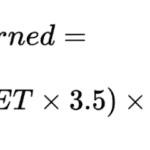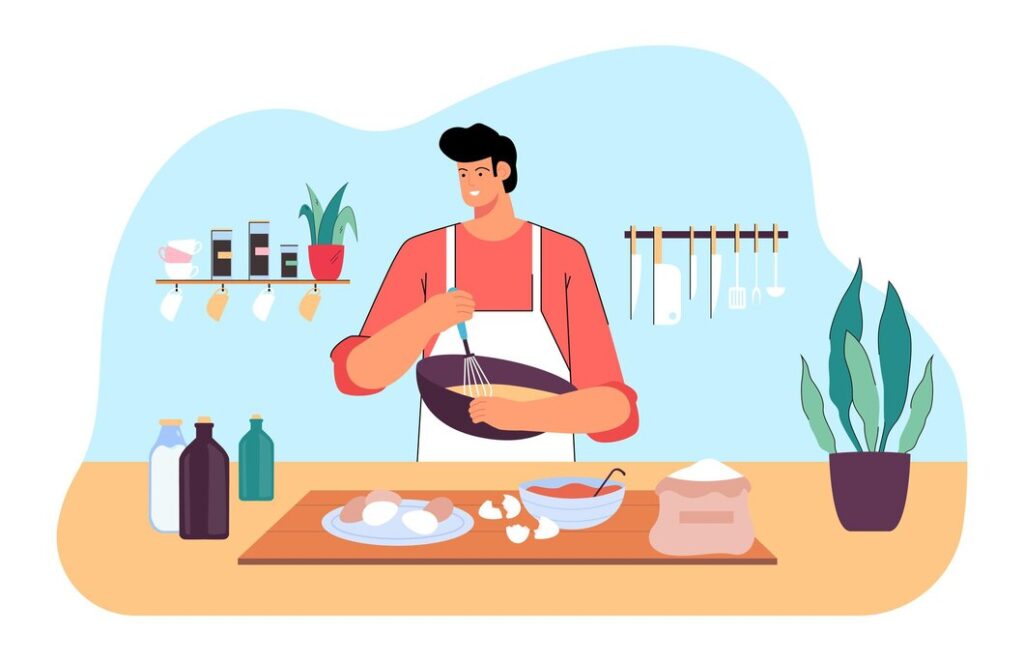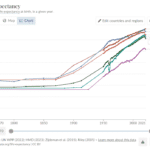Salt Calculator – Find Low Sodium Diet Foods, Sodium Per Day
Salt is an integral part of our diet, essential for flavor and preservation, yet it poses significant health challenges when consumed in excess. Understanding and managing your salt intake is crucial for maintaining a balanced diet and preventing health issues. This comprehensive guide explores salt’s role in our diet, its health impacts, and practical strategies to manage intake using our Sodium Calculator.
Sodium Content Calculator

INTRODUCTION
What is Salt and Why Is Sodium Important?
Salt, or sodium chloride, is one of the most widely used ingredients in cooking, but it’s far more than just a flavor booster. Sodium—the key component of salt—plays a vital role in keeping your body functioning properly.
The Role of Sodium in the Body
Your body needs sodium to:
- Maintain the balance of fluids in and around cells
- Support proper nerve signaling and muscle contractions
- Help regulate blood pressure and volume
However, the required sodium per day is much lower than most people consume. While only about 500 mg of sodium is needed for basic bodily functions, many individuals consume over 3,000–4,000 mg daily—mainly through hidden sources like processed food and restaurant meals.
Salt to Sodium: What’s the Difference?
It’s a common mistake to confuse salt and sodium. Salt is made of 40% sodium and 60% chloride, which means:
- 1 gram of salt ≈ 400 mg of sodium
- 1 teaspoon of salt ≈ 2,300 mg of sodium
This means that when you track your salt to sodium conversion, you’re really looking at how much of the salt you eat is affecting your sodium levels. It’s crucial to read food labels and calculate your intake accordingly to avoid overconsumption.
Most health organizations recommend limiting sodium intake to 2,300 mg/day, and ideally even 1,500 mg/day, especially for people with high blood pressure or heart risks.
Binge on Taste, Not on Salt. discover low-salt recipes
Recipians is your personal food and nutrition assistant. Explore thousands of dietitian-reviewed recipes, check accurate sodium levels per serving, and get daily intake insights—all in one easy-to-use app. Whether you’re managing blood pressure, eating clean, or just being mindful, Recipians helps you make informed choices without sacrificing flavor.
requirements of SALT in your body
Daily Sodium Requirement by Age
Your body’s need for sodium changes as you grow. From infancy to older adulthood, the recommended levels shift based on developmental stages, kidney function, and risk of high blood pressure. That’s why understanding the daily sodium requirement by age is essential—not just for individuals, but for families planning meals across generations.
The recommended sodium intake varies based on age and health status. Here’s a breakdown:
| Age Group | Recommended Sodium Intake |
|---|---|
| Infants (0–6 months) | 110 mg/day |
| Babies (7–12 months) | 370 mg/day |
| Children (1–3 yrs) | 800 mg/day |
| Children (4–8 yrs) | 1000 mg/day |
| Teens (9–18 yrs) | 1500–1800 mg/day |
| Adults (19–50 yrs) | 1500–2300 mg/day |
| Older Adults (51+) | 1200–1500 mg/day |
Infants and Babies: Sodium Starts Low
Newborns and infants have extremely low sodium needs, as breast milk or formula already contains sufficient sodium. Introducing extra salt at this stage is unnecessary and potentially harmful. Babies’ kidneys are still developing, so even small amounts of added salt can overburden them.
Children and Teens: Gradual Increase, But Still Limited
As children grow, so do their sodium needs—but only slightly. While their bodies are more active and larger than infants, they still don’t need adult amounts. Unfortunately, many school snacks and processed foods are loaded with sodium, pushing actual intake far beyond the recommended sodium per day.
Teens (especially athletes) might need slightly more sodium, but it’s vital to differentiate between what’s recommended and what’s consumed. Excessive Na intake during adolescence may set the stage for early hypertension and cardiovascular strain.
Adults: Watch Your Intake Closely
For most healthy adults, 1,500 to 2,300 mg of sodium per day is the safe upper range. However, individual needs can vary based on physical activity, climate, and underlying medical conditions. While sodium is essential, how much salt per day you consume should be kept in check to avoid long-term health issues like high blood pressure or kidney strain.
Older Adults: The Need Decreases Again
As we age, our kidneys become less efficient at regulating sodium. That’s why older adults are advised to limit their Na intake to around 1,200 to 1,500 mg per day. Excess sodium in this age group can worsen existing conditions like hypertension or heart disease and increase the risk of stroke.
How Much Sodium Per Meal?
If you’re targeting the upper limit of 2300 mg/day, aim for:
- Breakfast: 500–600 mg
- Lunch: 600–700 mg
- Dinner: 600–700 mg
- Snacks: 200–300 mg
Frequently Asked Questions About Salt Intake
SALT AND SODIUM CONVERSION TABLE
Salt to Sodium: How to Measure It Correctly
Many people confuse salt with sodium—but they’re not the same. Sodium is just one component of salt (sodium chloride). So when a label says “sodium,” it’s not referring to the entire salt content. Understanding the salt to sodium conversion helps you measure your actual intake accurately.
🧂 Common Salt-to-Sodium Conversions
| Measurement | Approx. Sodium Content |
|---|---|
| 1 gram of salt | ~400 mg sodium |
| 1 teaspoon of salt | ~2,300 mg sodium |
| 1 tablespoon of salt | ~6,900 mg sodium |
Wondering how much sodium is in a tablespoon of salt? As shown above, it’s nearly three times the daily upper limit for adults. This is why even a small handful of salty snacks or added table salt can quickly exceed your recommended sodium per day.
🔥 Calories in Salt
Salt contains no calories—it doesn’t contribute to your energy intake. But while salt doesn’t affect your weight directly, excessive use increases your risk of water retention, bloating, and hypertension. Many low-calorie processed foods can still be high in sodium, making label reading essential. Check how much calories you should eat daily
How to Find Milligrams of Sodium per Serving
If you’re watching your sodium intake, reading nutrition labels is crucial. Here’s a step-by-step guide to how to find milligrams of sodium per serving:
- Check the Label: On packaged foods, sodium content is listed per serving in milligrams (mg). Make sure you locate this clearly.
- Count Servings Accurately: If the serving size is half a cup and you eat one cup, double the sodium value.
- Compare Brands: Choose products with labels marked “low sodium,” ideally with 140 mg or less per serving.
- Track All Sources: Don’t forget sauces, dressings, and bread—often hidden sources of sodium.
Over time, this habit will help you control your daily intake and understand where your sodium is really coming from, even if a product doesn’t “taste salty.”
WHAT ARE LOW SODIUM OPTIONS?
Low Sodium Diet Foods: Eat This, Not That
Adopting a low sodium lifestyle doesn’t mean you have to give up flavor or convenience—it just means being smarter about your choices. Many everyday items contain hidden salt, especially prepackaged meals, snacks, and condiments. Here’s a quick guide on what to swap to cut down on sodium without sacrificing taste or nutrition.

🥗 Eat This: Low Sodium Foods
Choose these options to stay within your sodium per day limit while still enjoying a variety of meals:
- Fresh vegetables & fruits (spinach, berries, cucumbers)
- Low sodium breakfast options like oats, boiled eggs, or unsweetened yogurt
- Low sodium drinks such as herbal teas, coconut water, or homemade smoothies
- Unsalted nuts and seeds
- Dried beans or no-salt canned beans
- Whole grains like brown rice and quinoa
- Lean proteins (grilled chicken, tofu, fish without added sauces)
- Low salt fast food (grilled chicken sandwich without cheese or sauces, plain baked potato)
Many people ask, “how to reduce salt in food?” The answer lies not just in cutting down on the salt shaker, but in choosing ingredients that are naturally low in sodium.
🍟 Not That: High Sodium Traps to Avoid
Some foods appear innocent but are loaded with sodium—even more than what’s recommended for an entire meal. If you’re wondering how much sodium per meal is too much, a good benchmark is around 600–700 mg per meal, based on the 2,300 mg daily limit.
Avoid or limit:
- Processed meats (bacon, ham, sausage)
- Canned soups and broths (even “light” versions can be salty)
- Packaged instant noodles and pasta meals
- Prepackaged tomato juice – yes, it often has lots of sodium unless labeled low-sodium
- Salted snacks (chips, pretzels, crackers)
- Frozen dinners – especially lasagna, pizza, and other pre-seasoned dishes
- Fast food with least sodium still isn’t always low—check nutrition facts before ordering
👀 Quick Tips for Grocery Shopping:
- Always check the label to see how to find milligrams of sodium per serving
- Look for products labeled “low sodium” (≤140 mg) or “very low sodium” (≤35 mg)
- Buy unsalted or no-salt-added versions of canned foods and sauces
- Compare brands—some offer significant sodium savings without changing flavor
By making small swaps, you can build a low salt diet that’s both heart-healthy and full of flavor.
TIPS TO REDUCE SALT INTAKE
How to Reduce Salt in Food
Reducing salt in your meals doesn’t have to mean sacrificing flavor. If you’re adjusting your diet to meet the daily sodium requirement by age, here are some practical and lesser-known ways to cut back.
🥣 Try Low Sodium Breakfast Options
Breakfast can be a surprising source of sodium—especially if you’re relying on cereals, breads, or processed items. Opt for low sodium breakfast choices like oatmeal made from scratch, fresh fruits, or boiled eggs without added salt. Pair it with a low sodium drink like herbal tea or a homemade smoothie without salt-based preservatives.
🍅 Be Cautious with Prepackaged Juices
It’s not just chips or snacks that contain salt. Even drinks like prepackaged tomato juice can have a high sodium load. Always check the nutrition label, especially for beverages marketed as “healthy.” A single serving can contribute significantly to your total sodium per day without you realizing it.
🌍 Learn from Countries with the Least Salt Consumption
Countries like Japan (outside of certain regional dishes) and Finland have implemented strong public health campaigns to reduce salt use. These salt statistics show the benefits of nationwide change, such as lower hypertension rates and improved heart health.
🌿 Flavor with Herbs, Lemon, Garlic & Vinegar
Instead of reaching for the salt shaker, experiment with herbs like basil, thyme, and rosemary. Acidic flavors such as lemon juice and vinegar can brighten a dish without adding sodium. Garlic and pepper can also bring bold flavors that eliminate the need for added salt.
🛒 Choose “No Salt Added” or “Low Sodium” Products
Reading labels is key. Look for items clearly marked “low sodium” (≤140 mg of sodium per serving) or “no salt added.” This helps when trying to figure out how to find milligrams of sodium per serving. When in doubt, compare brands—some contain far less salt than others.
🚿 Rinse Canned Foods to Remove Excess Sodium
Canned vegetables, beans, and even meats can be convenient, but they often come loaded with salt. Rinsing them under cold water for about 30 seconds can significantly reduce sodium content—sometimes by up to 40%. It’s a small step that makes a big difference in Na intake.





